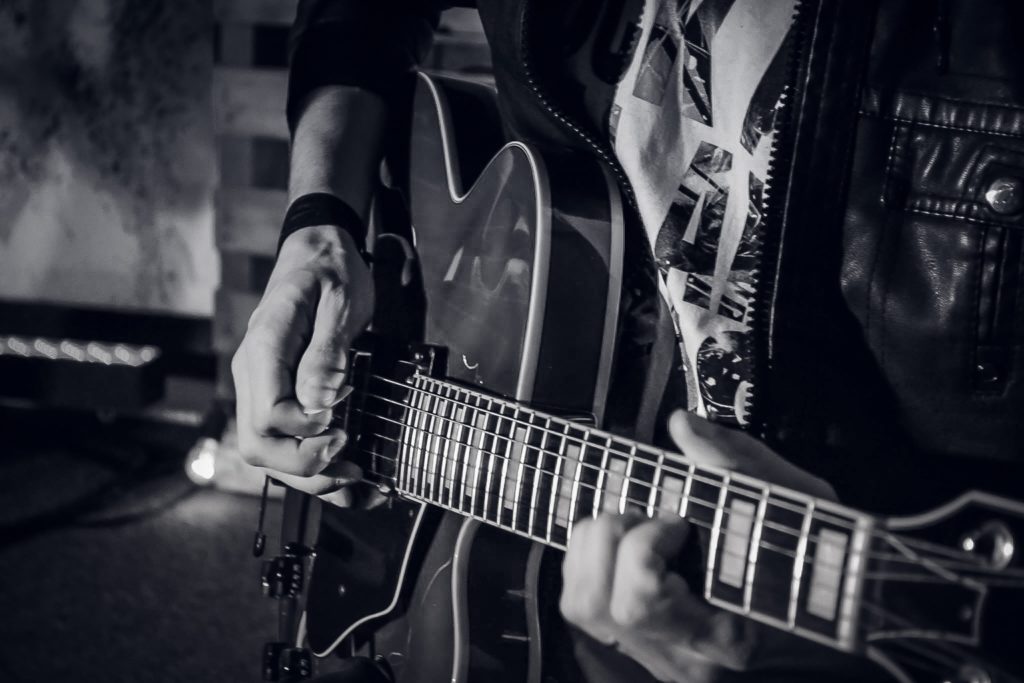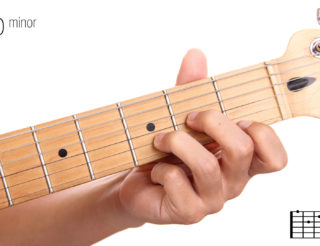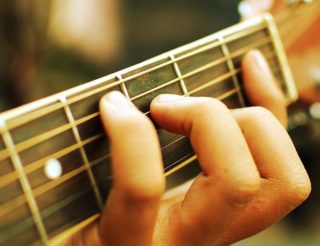Play Guitar Solo In Any Key Without Learning Notes – The 5 Major Scale Patterns
Author: Graeme Hague

When you’re running through your Uberchord (click for free download) training exercises, do you get the urge to sneak in a bit of a guitar solo? May be a grooving riff? But you don’t know what to play?
The bad news — solos and riffs are based around scales and learning scales can be especially daunting.
The good news — somebody has already figured out an approach to playing scales correctly without learning all the proper note names and fret positions.
But, in case you are really interested in learning how scales are formed, then we suggest you check out our Beginner’s Guide to Music Theory: How a Major Scale is Formed.
The concept of learning patterns or “shapes” on the fret board without memorising the underlying notes has been around for a long time. It applies in particular to scales and is quite a simple idea.
The correct way to play a scale — which fingers are used on what fret in relation to each other — stays exactly the same for every key as long as the root note is located on the same string.
Table of Contents
Example:

To play a G Major scale on the guitar you’d begin with the root note on the bottom (or low) 6th string on the 3rd fret. When you master how to play that scale by learning the “pattern” of correct fingering.
To play an A Major scale you simply move your left hand up a tone to the root note on the fifth (fret) and play exactly the same pattern or “shape”. Of course, you’re playing different notes, because you’re in a different key, but your fingering doesn’t change.
Taking that further, always choosing a root note on the 6th string, it means you can play the major scale of any key with exactly the same pattern starting from F Sharp right up until you run out of fret board.
Why not the key of F? Well, some notes you’d be playing open strings instead of a fret, meaning essentially you are playing a different pattern, right?
The secret to avoid playing the wrong notes for any key isn’t so much about learning scales note-for- note, but learning fret board patterns.
When you’re playing solos or just easy, single-note melodies, this concept of learning patterns teaches you what fret positions on what strings will always be in key to the rhythmic chord you’re accompanying — and which frets to avoid. This is all done without ever busting any brain-valves from trying to remember what actual notes you’re supposed — or not supposed — to be playing.

Other advantage to learning patterns and shapes
Patterns are also very much about giving you the best technique to play the scales, using the right fingers for the right frets.
That’s a good thing.
Now, before you decide that I’ve given you the Holy Grail to instant, perfect shredding it’s not that easy. If your root note moves away from that 6th string to a higher octave, then the patterns change. Still, the theory is the same, meaning that the scale pattern doesn’t vary for any key in a higher octave as long as the root note is still always located on the same string.

With this approach, playing scales have only five different patterns to learn that can be applied to any key — meaning five different positions on the fret board to play the scales and how to play them.
Different Scales, Different Patterns
However, there are many types of scales — which means the patterns will alter slightly each time. A simple example would be a major scale compared to a minor scale, the latter having two notes played differently, therefore the pattern will change accordingly. Learning patterns and shapes becomes a challenge of its own when you’re trying to memorise all the slight variations needed to accommodate different scales.
But starting with the basics — the major and minor scales patterns, and the five positions for each, is a huge step in the right direction. And you’ll be surprised at how quickly your fingers will learn where to go. Before you know it, when you’re jamming along to your Uberchord (click for free download) exercises, you’ll be able to play cool riffs and even lead solos without ever hitting a bad note.
And without having to think about playing the right notes — just the right string and fret. That’s pretty cool.
So, while you work on your guitar solos, make sure you are playing Guitar with good technique from the beginning. (click to read, if you are playing it correctly)










You left the first D off your diagram for a G scale in the first position.
Hi Tony, thanks for pointing it out. We have replaced it with the correct image. :)
Except now pattern 1 doesn’t expand upon clicking
I don’t understand how it’s still the G major scale when starting on a different fret (root note) as shown in the patterns above? No one that teaches the 5 patterns mentions this at all. This is the most confusing part. Please help.
Hi! you put a D as a Tonic in the 10th fret example (5th position) image
in the G major 5th position diagram, you have F note on the D string, it should be F#